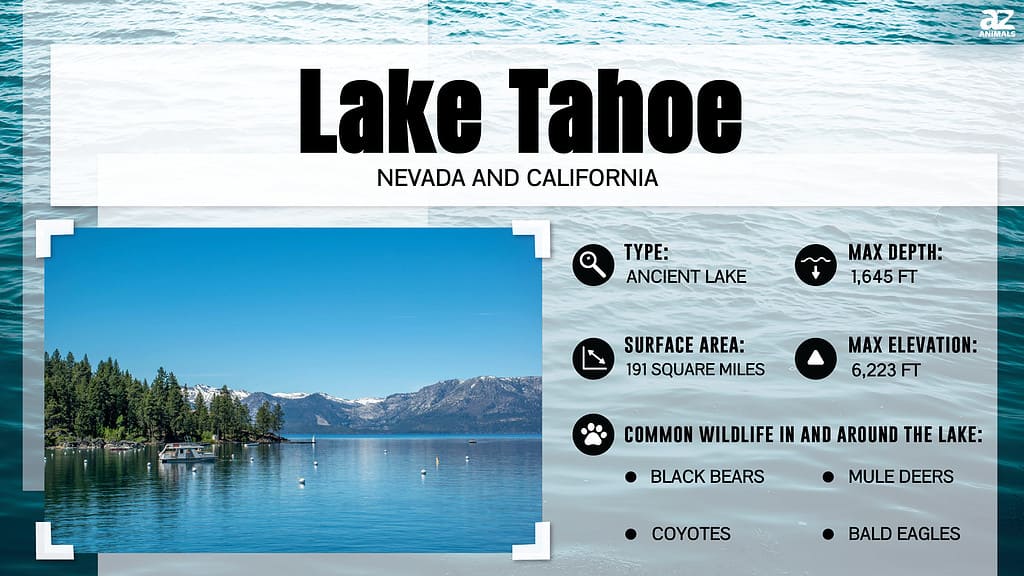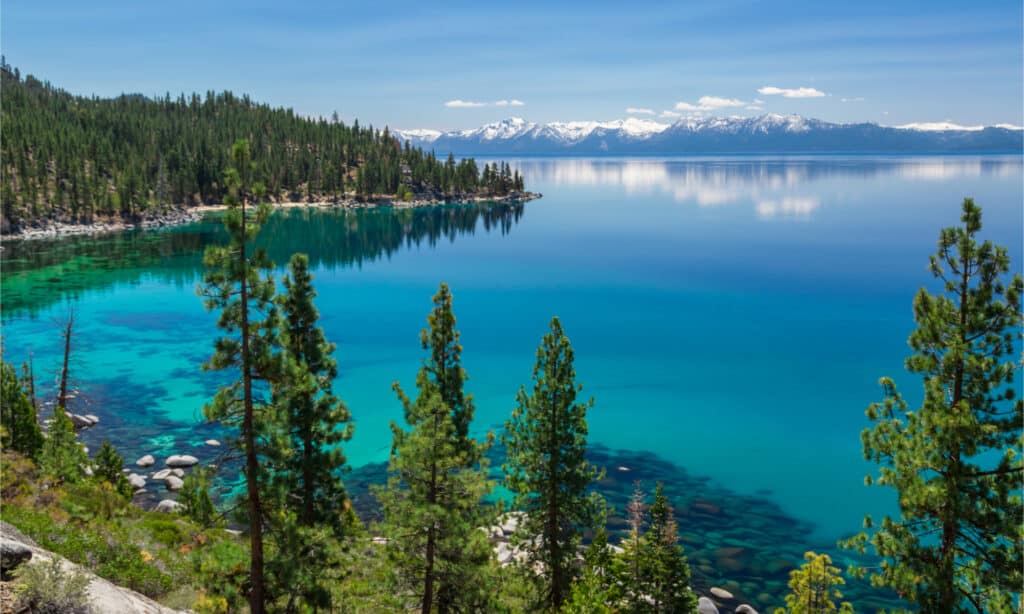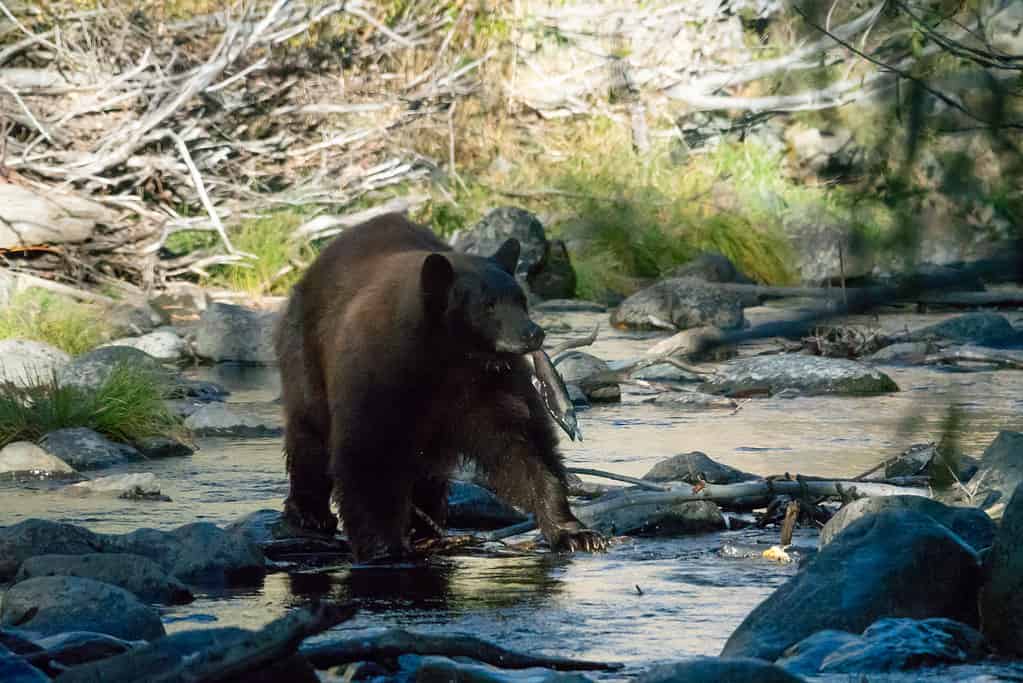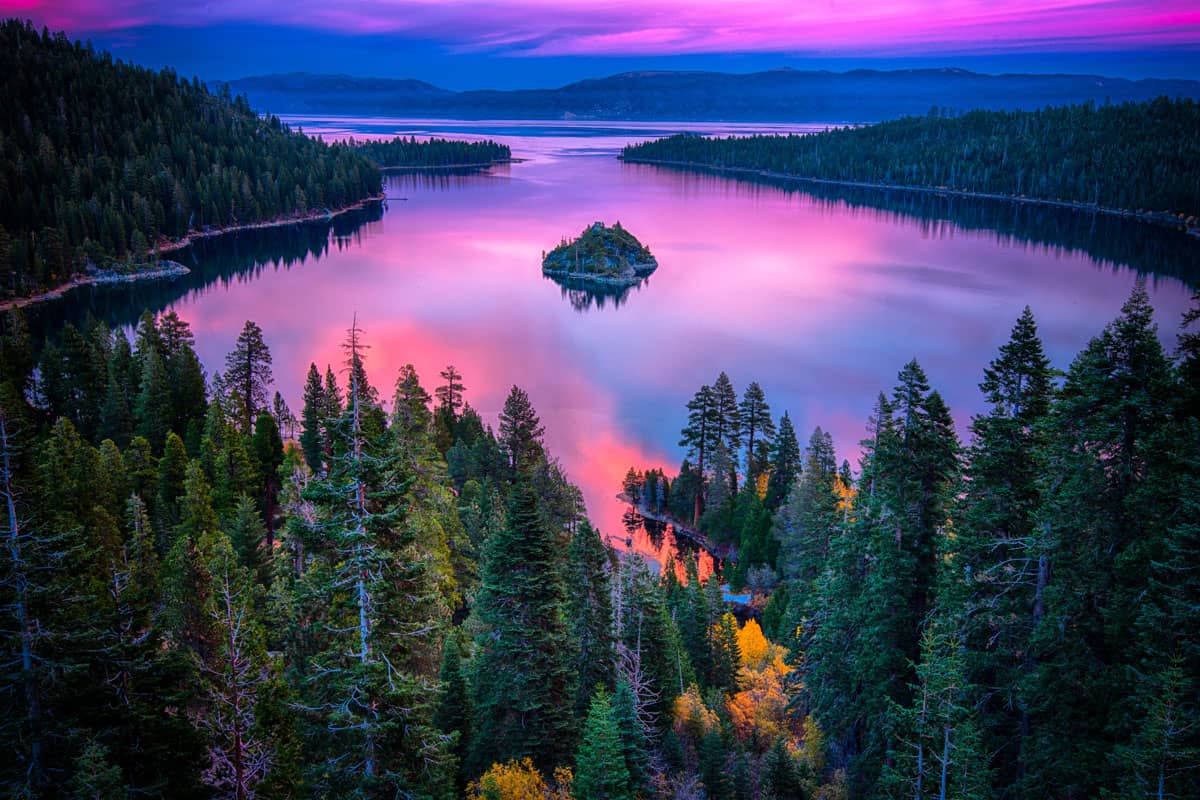Thousands of people live in the Tahoe Basin, and each year, millions more visit the area to experience the beautiful and ancient landscape and the wildlife that lives within it. But the Tahoe Basin that people are familiar with wasn’t always what it is today. Millions of years ago, when Lake Tahoe was formed, the landscape was quite different.
In this article, we’ll explore the formation of Lake Tahoe and its ancient lake bed. We’ll also find out just how deep this massive freshwater lake is and learn what types of animals live in and around it.
Just How Deep is Lake Tahoe?

Also known as the Jewel of the Sierra, Lake Tahoe is one of the deepest lakes in North America. It reaches its deepest point near Crystal Bay, Nevada, where the lake floor drops to an astounding depth of 1645 feet. That’s deep enough to completely submerge New York’s Central Park Tower! Only two other lakes on the continent are deeper: Oregon’s Crater Lake, bottoming out at 1945 feet, and Canada’s Great Slave Lake at 2,015 feet.
Incredibly, Lake Tahoe also ranks worldwide on the list of deepest lakes. There are only 16 other lakes on Earth that are deeper, and many of them don’t take the lead by much. In fact, at many points in the Earth’s history, Lake Tahoe was much deeper. It has also been quite a bit shallower. The water levels in the lake have fluctuated greatly throughout history and prehistory. Today, we can tell the extent of some of these fluctuations by examining the growth rings of dead trees that haven’t yet decomposed fully. Some of these are 20 feet below the current lake surface and have sat fully submerged for hundreds of years!
But why exactly does the lake depth change over the years? What feeds it, and where does the water go when the levels drop so drastically? Furthermore, how was Lake Tahoe formed, to begin with?
How and When Was Lake Tahoe Formed?

People engage in the waters of Lake Tahoe year-round. While some parts of the surface may partially freeze in the winter, the volume of water contained in the basin — about 37 trillion gallons — never freezes through. The vast majority of the surface never freezes at all!
©Madhu Gopal/Shutterstock.com
Many have speculated about the formation of Lake Tahoe. Some believe that ancient glaciers were responsible for their formation. Others speculate that the collapse of a volcanic crater opened up the deep basin. Both of these are partially correct, but the story, as we understand it now, is a bit more complicated.
About five million years ago, the shifting of the earth’s crust gave rise to the Carson Range and the Sierra Nevada. Between these ranges, another part of the crust sank, forming an extremely deep and steep-walled valley. This valley collected all of the ice melt from the new ranges on either side of it and, for millions of years, released it to the north.
The formation of Lake Tahoe as we know it today took place about two million years ago when the original valley basin became blocked off by volcanic action. During an eruption of the now-extinct Mount Pluto, lava flows and mudslides sealed off the northern end of the valley. Snowmelt and runoff from the mountain range on either side continued to flow into the newly formed basin. Without an exit, however, it began to collect and eventually gave rise to an ancient Lake Tahoe that was several hundred feet deeper than the lake we know today.
Over time, the water in the basin wore away a new outlet, forming what is now the Lower Truckee River outlet on the northern side of the lake.

The crystal clear waters of Lake Tahoe and the development of the surrounding forest environment are all the result of ancient faulting and volcanic activity. The gradual erosion of the northern obstruction eventually gave way to the Lower Truckee River.
©topseller/Shutterstock.com
What Lives in the Tahoe Basin?
There is abundant wildlife in and around the Tahoe Basin. The forests that surround the lake’s ancient waters began to appear around ten thousand years ago. As they developed, many species of animals began to take up residence there.
Today, visitors to and residents of the basin have many opportunities to spot wildlife. The largest of the region’s carnivores, the black bear, appears frequently throughout the basin. American beavers frequently build dams and lodges in the lake and its adjacent waterways. American martens leap through the treetops in pursuit of the many birds and tree squirrels that reside in the area. Red foxes build dens in the area as well. Sometimes, residents and tourists even spot bobcats and mountain lions.
At night, the nocturnal coyotes and their packs can be heard yipping as they hunt their prey. Many varied species of owls also take up residence in the basin’s forests. The great horned owl, the barn owl, and both long- and short-eared owls also take nighttime hunts in the area.
The lake’s clear, blue waters are home to plenty of fish species. Kokanee salmon (Oncorhynchus nerka), which are landlocked sockeye salmon, are present in the lake in large numbers. Native to Alaska, Russia, and the Bering Sea, they appear in the lake as the result of human introduction. Goldfish, catfish, and several species of sunfish also appear in the lake for the same reason. Largemouth bass, smallmouth bass, crappie, and bluegill were all introduced to the lake by humans for sport fishing at some point in time. Native fish species, such as the threatened Lahontan cutthroat trout (Oncorhynchus clarkii henshawi), the tui chub (Siphateles bicolor), and the mountain whitefish (Prosopium williamsoni) also appear throughout the lake.

A black bear eating a fish along Lake Tahoe is a common sight. Always carry bear spray.
©Lisa Parsons/Shutterstock.com
Thank you for reading! Have some feedback for us? Contact the AZ Animals editorial team.








